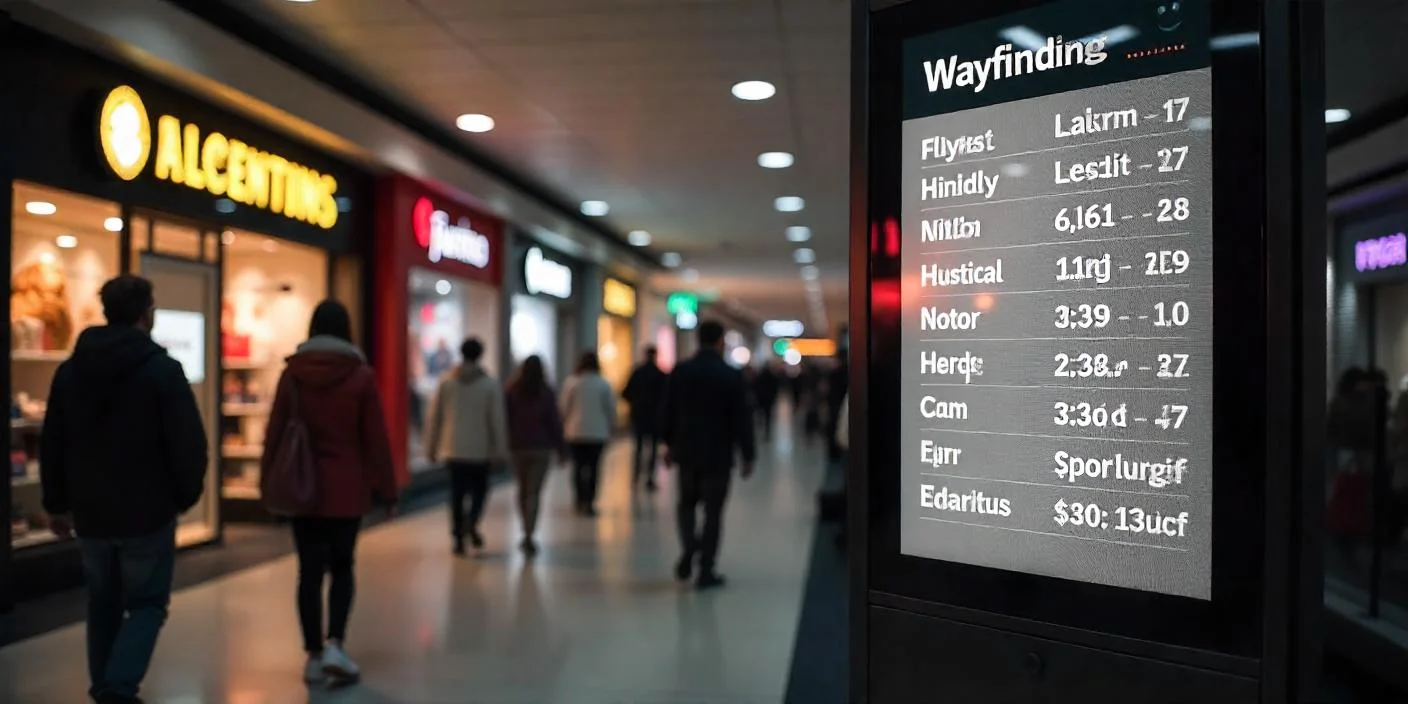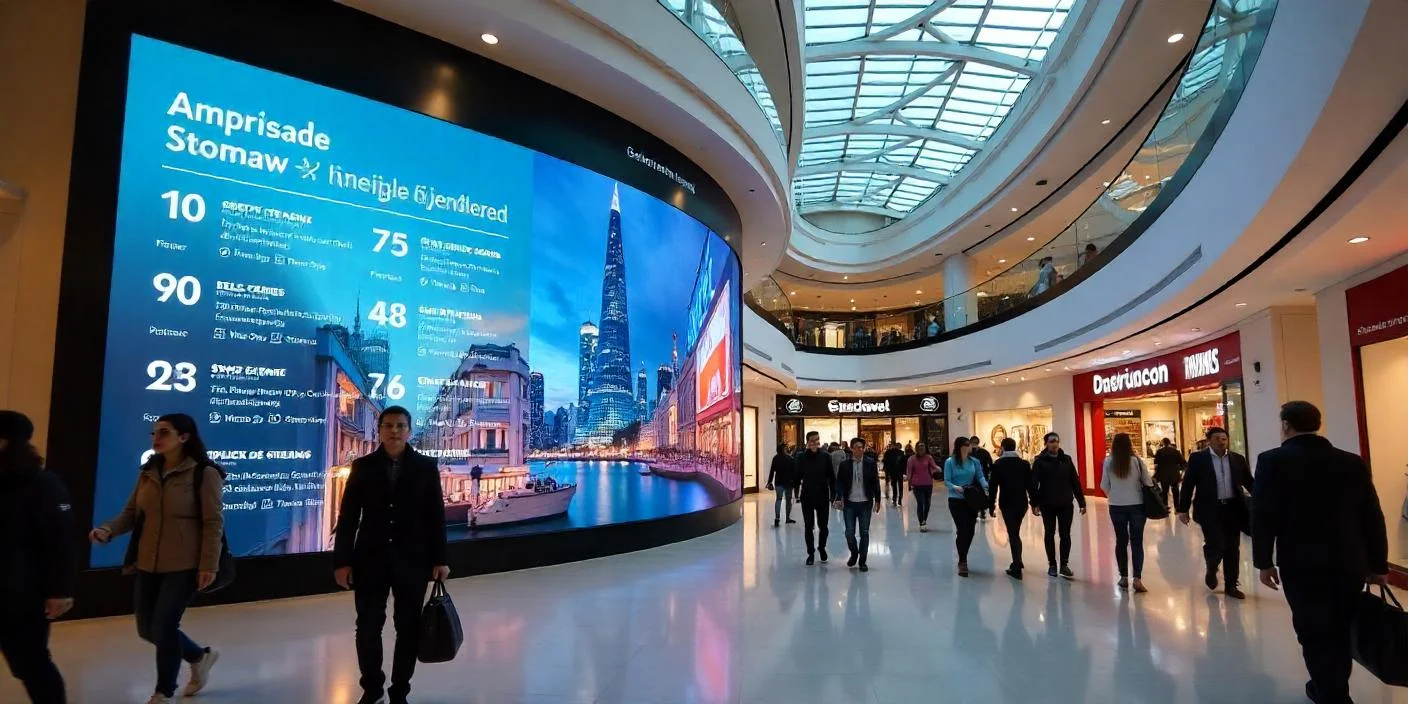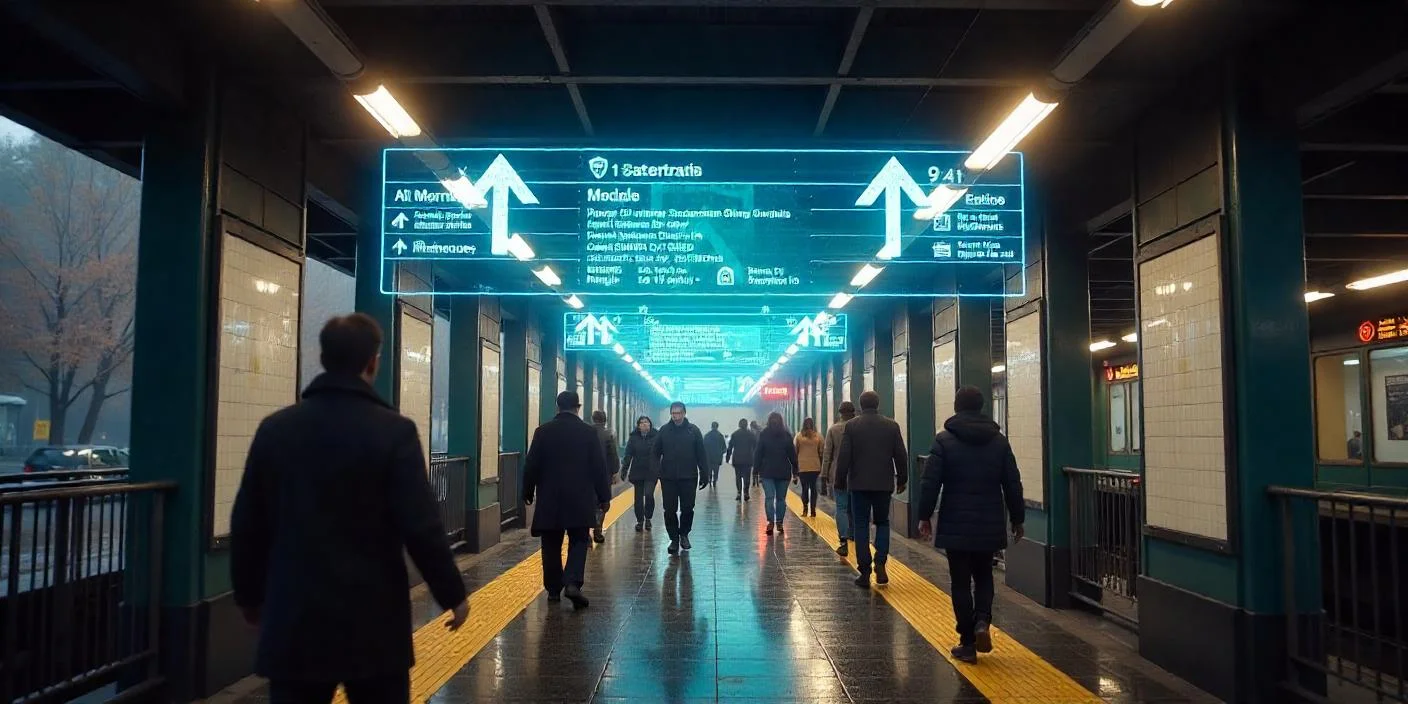Introduction to Wayfinding Digital Signage
Patients must travel through complicated environments such as airports and hospitals and university campuses just as they would through a labyrinth. Digital wayfinding displays remove the occurrence of navigational confusion. The system provides visitors with real-time interactive data which helps them navigate their path without problems. The solution involves more than guiding directions because it establishes an effortless, welcoming environment.
The Evolution of Wayfinding: From Static to Digital

Progress started from static wayfinding signage and reached a major milestone through digital advancement. Static signs that easily deteriorate and are easily replaced by outdated information cannot meet the requirements of places that change frequently. Digital signage systems offer users management flexibility together with touchscreen interactivity under a centralized monitoring system. Digital navigation systems have replaced passive systems with their modern intelligent capabilities.
What is Wayfinding Digital Signage?
Definition and Core Purpose
The wayfinding digital signage represents an advanced navigational technology consisting of digital displays to lead individuals through physical environments. The main function of this system involves offering accurate location-based data that enables users to get to their destinations efficiently and calmly.
Difference Between Traditional and Digital Wayfinding
Traditional signage is static. Digital signage is dynamic. The second version uses real-time information and user-specific content and interactive geographic displays. Users need to drive interactive wayfinding through touch detection which lets the system provide personalized responses to end users.
The Importance of Wayfinding in Modern Spaces
Enhancing User Experience
Visitors who become confused in unfamiliar or busy areas experience a negative experience. Digital signage wayfinding software provides easy and pleasant navigation for users.
Reducing Confusion and Stress
Signage placed incorrectly combined with unclear signage instructions causes people unnecessary stress. Modern smart wayfinding technology decreases mental workload while creating security among facility guests, most notably inside medical buildings and transportation terminals.
Key Environments That Benefit from Wayfinding Digital Signage
Wayfinding Digital Signage for Hospitals
Medical facilities rank among the most anxiety-inducing facilities that exist. Hospital wayfinding signage positions strategic placements to help patients together with visitors navigate toward emergency rooms and specialist departments and decisive treatment areas. The deployment of these signs decreases appointment failures while creating operational advantages.
Airports and Transportation Hubs
Digital signage has become essential for airports because flight delays combined with gate changes and extensive facilities require this technology. These signs provide essential directions for boarding information as well as lounge accessibility and security to passengers.
Universities and Educational Campuses
The permanent changes in university environments include Orientation week and open days and exam halls. Interactive navigation systems show immediate updates to help visitors and students reach their destinations without experiencing much complexity.
Corporate Complexes
Digital signage systems operated by visitors permit them to locate departments and boardrooms and discover upcoming events while featuring branded design themes. The system both enhances professional appearance and does away with traditional printed floor directory systems.
Retail Centers and Malls
Mall success depends heavily on easily visible promotions. Retail exposure and user experience get maximized by digital signage solutions which serve as retail guidance tools that also promote sales events to shoppers.
Hotels and Resorts
Luxury environments serve their guests through multilingual designs that provide both style and pathway access from spas to conference centers.
Essential Features of an Effective Wayfinding Signage System
Interactive Touchscreen Capabilities
The system enables touch interaction, which enables users to search for places and examine various routes together with additional data about timings and occupancy status.
Real-Time Data Integration
Real-time updates become immediately available to visitors thanks to these systems which integrate with calendars and weather updates along with transport APIs.
ADA Compliance and Accessibility
All visitors can easily navigate these systems through features that combine high-contrast graphics together with audio help and routing for wheelchairs and braille design elements.
Multilingual Support
Multilingual support serves as an essential requirement for global locations including airports and international hospitals to deliver uninterrupted service to all visitors.
Design Principles for Digital Wayfinding
Visual Hierarchy and Readability
Clear designing of wayfinding signage requires effective planning because this is non-negotiable. Design signage with clear fonts alongside bold headings and contrasting colors which allows for quick easy reading.
Consistency in Symbols and Icons
Signage symbols need to follow identical visual patterns throughout their presence. Pictographic symbols need to maintain standardization across all signage to prevent visitor misunderstandings about the displayed information.
Strategic Placement and Visibility
Digital signs should go at decision-making locations including entrances, junctions and elevator areas since visitors naturally look for guidance on these points.
Benefits of Digital Wayfinding
Operational Efficiency
The implementation of automated navigation routes frees staff members from directing people so they can dedicate their time to other responsibilities. The system helps decrease congestion when many people gather in one location.
Brand Cohesion
Digital signage helps maintain brand consistency because it applies to your consistent design elements such as texts and branding marks and brand colors across all display points.
Data Collection and Analytics
Signage systems monitoring visitor behavior measure key factors including the main paths taken by guests and measurement of time spent and busy time frames of use. Operation planning efficiency improves, and content customization becomes possible through the collection of this information.
Common Challenges and How to Overcome Them
System Downtime
Digital signage systems require reliability. The implementation of cloud-based backups alongside failover systems maintains continuous operation of your signs throughout all hours of the day.
User Interface Complexity
The simpler, the better. Screen options that are packed together create user interface complexity, which leads to screen overload. The main navigation destinations should appear first, while secondary options should follow below for convenient access.
Keeping Content Up to Date
Internal system and scheduling tool automation enables your content to stay constantly accurate without requiring manual input.
The Role of AI and IoT in Smart Wayfinding

Smart wayfinding gets improved dramatically through the combination of Artificial Intelligence (AI) technology with Internet of Things (IoT) operations. AI uses previous usage data alongside live crowd flow monitoring from IoT sensors which lets it predict upcoming needs and adjust signage directions accordingly.
The Future of Wayfinding Digital Signage
Digital signage wayfinding systems will unlock numerous potential advancements in the upcoming days. The future of navigation technology will deliver enriched 3D mapping capabilities along with AR visual displays and voice-operated search functions and biometric accessibility features. Intuitive navigation will become even simpler through touchless interface methods which allow either gestures or mobile device associations.
FAQs
What is the best wayfinding digital signage software?
Choose software systems with simple CMS operation, real-time database connection, mobile device coordination capabilities and analytic features.
How does interactive wayfinding improve navigation?
Interactive wayfinding lets users interact with maps by searching destinations through personalized route directions. The system reduces user confusion while enhancing the speed of navigation processes.
Is outdoor wayfinding digital signage different from indoor systems?
The design of outdoor systems incorporates features that make them resistant to weather elements and sunlight as well as other outdoor conditions. Their manufacture includes bigger screens together with solid protective casings which enhance both resistance and viewability.
Can digital signage be integrated with mobile apps?
The majority of wayfinding systems integrate with smartphones so users can exchange routes while the system sends real-time alerts through BLE and NFC connections.
Are these systems suitable for small businesses?
The market provides adaptable solutions which suit businesses of any size including clinics along with boutique hotels and coworking spaces. The core features are available in these systems which make them affordable for smaller venues.







